The past is what happened. History is how we talk about it. When we discuss it, the past meets the present and becomes real, part of now.
Conversely, the unspoken past is not history. It happened but it does not exist, obliterated as it is by silence. By sealing our lips we seal off what we don't want to remember, the things we don't want to be real—whether personal tragedy, an act of genocide, or the 2016 NBA Finals.
But silence also obscures the positive past.
One Saturday afternoon 25 years ago, you hung out with your older brother, after he had gotten kicked out of the house. You rode around in his candy-apple red Chevelle, listening to FM radio. Then you ate lunch at McDonald’s (big brother splurged and super-sized your meal), and played Operation Wolf for three hours at the arcade in the mall.
"They were stories that I felt weren't being told. Just tying those things together was the original impetus for starting the company."
It was a day that neither of you ever mentioned afterwards. What was there to say? It was all so trivial. But now, one day at random, the memory comes barreling into your conscious mind. Looking back over the course of untold time, the simple afternoon seems alien. The inexorable churn of split seconds into decades has insulated the experience, creating distance.
You marvel at your (old) younger self, as though those few hours with your brother—not to mention the accompanying sense of total contentment—happened to someone else entirely, someone who lived in a different reality than yours, what Jerry Cohen might call a “parallel universe.”
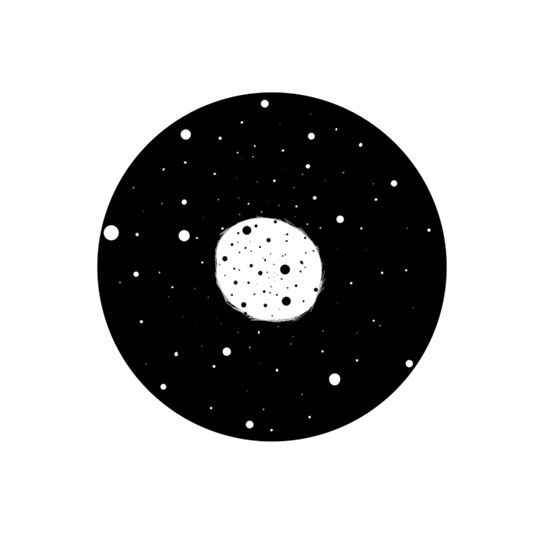
Jerry founded Ebbets Field Flannels in 1988. At first, Ebbets made replica baseball jerseys. Then came jackets with leather sleeves, along with the now-famous Ebbets ball cap—all from historic, and mostly obscure, teams. Today Ebbets remains committed, as the company says, "to bringing the quality, beauty, and craftsmanship of mid-Century American athletic garments to a 21st Century public."
Through it all, the "parallel universe" has remained front and center for Ebbets. Jerry often mentions the idea in interviews, usually in passing. When I asked him about it recently, he said, “The parallel universe reference—they were stories that I felt weren't being told. Really, just tying those things together was the original impetus for starting the company, and to this day it is the main set of values and parameters that we use whenever we do anything.”
Tie what things together, exactly?
“I think there's a lot going on with what we try to do," Jerry told me. "One is to sort of look back at (American) culture and view it through contemporary times through the uniforms. Another is to remind people where things came from. The great thing about baseball is there's a thread you can trace back, pretty much as far as you want to go."
When you pull this thread, you uncover stories that few people know. These stories are about baseball, and about America. They actually happened, but because of our distance from them (all those split seconds rushing into decades), they now have the ghostly resonance of an echo. They almost seem unreal, not of this world. Like that afternoon with your big brother, it's as though they occured in a different, divergent timeline.
Taken together, these stories make up the parallel universe of Ebbets Field Flannels. Jerry's "thread you can trace back" holds the parallel universe intact, weaving together all the disparate fibers of baseball culture—everything from Rockwellian innocence to hard-to-swallow facts—into a single, unified fabric.
For an example of that innocence, consider the Katz.
On its website, Ebbets describes the 1961 Kansas City Katz hat as “one of the most distinctive and fun caps we have ever seen.” Sponsored by the Katz chain of pharmacies, 50 years ago the baseball Katz competed in the amateur Ban Johnson League, which survives today as a place for college players to sharpen their skills in the offseason.
When you look at the quirky / creepy feline stitched onto on the front of the Katz hat, you expect its eyes to follow you around the room. It’s definitely the zaniest and (pardon the pun) most madcap thing that Ebbets has done in recent memory. If not for an Ebbets customer stumbling upon a vintage Katz hat on eBay, Jerry would have never known about the team, and the new reproduction wouldn’t exist. The Katz, in turn, would have kept drifting further into the silence of the unspoken past.
So much for innocence. Now for some of those hard-to-swallow facts.
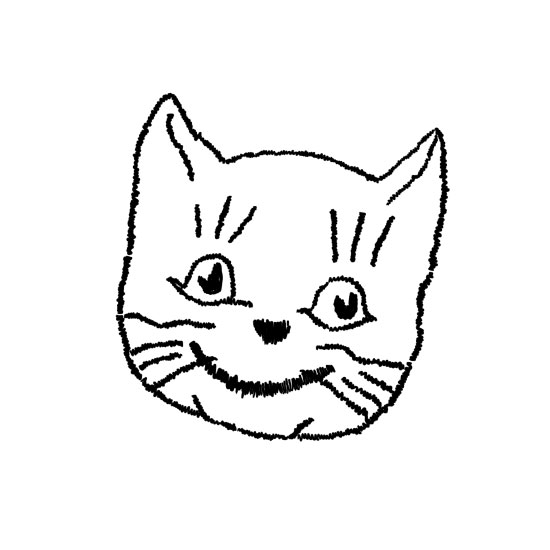
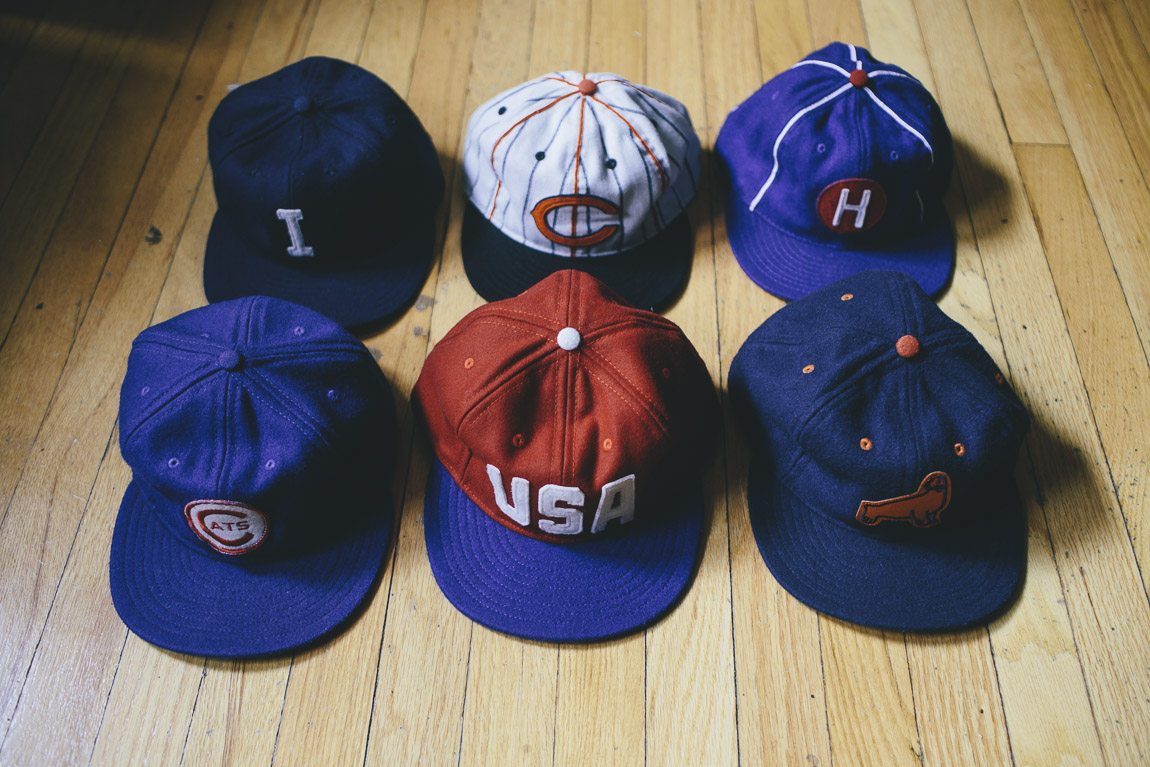
In this brief digression from the main story, we consider Ebbets' descriptions of its products as "vintage authentic."
The 1942 Kansas City Monarchs cap is intense (red rayon piping, red bill, red accents around the bold blue “KC”). This visual force gains an extra dimension when you consider the cap’s original context. As explained on the Ebbets site, the Monarchs played in an organization known as the Negro American League.
"Negro."
It’s impossible to write that word without cringing, even though it was the preferred, or accepted, nomenclature of the time. It’s even more difficult to consider that a mere 73 years ago there existed a need for such a thing as the Negro Leagues in the first place. During the era of segregation, Major League Baseball was not an option for African American players, regardless of their talent. This exclusion created a vacuum that the Negro Leagues filled.

Some Negro League teams were more successful than others, but arguably none more so than the Monarchs. The Monarchs only had one losing season in nearly 40 years of top-flight competition. They won the inaugural Negro League World Series, captured double-digit championships, and featured more future Major League players than any other Negro League team.
In the mid-1940s, two of those players happened to be future Hall of Famers: Satchel Paige and Jackie Robinson.
Satchel Paige’s legendary skill was second only to his personality. Ebbets accurately describes his career as “peripatetic." He pitched everywhere from Alabama to the Dominican Republic and back again. Ebbets also observes that “Satchel Paige was known to honor a contract until a better offer came along.” He joined the Major Leagues late in his career. When people asked about his age, he would reportedly answer, "How old would you be if you didn't know how old you are?" To this day, some people insist that his July 7 birthdate is only an estimate.
As we look back from the present, muddled facts add to his mystique, but even during his own lifetime, Paige was an African-American folk hero. My father lived in Akron during Paige's time with the Cleveland Indians. According to dad, neighborhood guys who had fallen on tough times would ask to do work around the house, explaining that they wanted to splurge on a trip north to see Paige in the flesh.
When you pull on the Satchel Paige thread, you come across my 1934 Pittsburgh Crawfords hat—or you would have, anyway, had Ebbets not sold out of the style. The hat initially caught my eye because of the “C.” It looks very much like the Chicago Bears emblem, which means I get a lot of confused looks and comments as I walk the streets of Chicago—"What kind of Bears hat is that?"—which I find highly enjoyable. (See also: my 1958 Fort Worth Cats hat, pictured throughout this story, which prompts many discussions about the Cubs, a team I'm entirely ambivalent towards.) As Jerry has said elsewhere, there is definitely a "cognoscenti" aspect of Ebbets apparel.
Although I knew about Satchel Paige from dad, it wasn't until I read about my Crawfords hat on the Ebbets site that I learned that the legendary pitcher had played as part of a Hall of Fame battery. In 1934, after Crawfords owner Gus Greenlee broke out the checkbook and brought in all the top talent he could, Paige threw to a catcher named Josh Gibson.
This is the thing about the Ebbets parallel universe: each thread that you pull uncovers an infinite number of other threads, and each of those that you pull uncovers an infinite number of other threads, and each of those that you pull uncovers ...
When you pull on the Josh Gibson thread, you uncover the "black Babe Ruth."
During his 17-year career, Gibson’s official stats put his home-run total at just 107, but anecdotally he hit more than 800 against all competition, including independent teams. Negro Leagues stats were not necessarily well-maintained, leaving room for exaggeration and folklore—and, rather conveniently, hindering solid comparisons between Negro Leaguers and their white counterparts in the so-called Majors.
Had accurate records been kept, Babe Ruth might have gone down as "the white Josh Gibson." Had Gibson been white, today he would almost certainly be a household name.
Pull a little more on the Gibson thread and you uncover the 1945 Homestead Grays. Gibson bookended his career with the Grays. He first joined the team at age 18, while attending a Grays game as a spectator. When the starting Homestead catcher hurt his hand, Gibson volunteered to take his place, thus starting a Hall of Fame career. That kind of beginning is the stuff of legend, and it set the tone for how people talked about Gibson.
After his time with the Pittsburgh Crawfords, Gibson played nine of his last 11 career seasons with the Grays. In 1946, he died from a stroke at age 35. The Negro Leagues—and America—lost one of its greatest all-time baseball players. Three months later, Jackie Robinson became the first person of color to play Major League Baseball.
Paige followed Robsinon to the Majors, winning a World Series with the Indians. Years later, when Paige was inducted into the Hall of Fame, he gave an acceptance speech. In the Negro Leagues, he said, “There had been many Satchels, many Joshes.” Most of those names are now lost forever to the past. The only reason I know of guys like Cool Papa Bell (greatest baseball name ever?) and Oscar Charleston is because of Ebbets Field Flannels.
In 1934, Cool Papa and Oscar played with Satchel and Josh on the same Pittsburgh squad. They all wore a hat that featured a stylized orange “C.”
One of the reasons Jackie Robinson went to the Majors ahead of his old Kansas City Monarchs teammate Paige, the thinking goes, is that Paige was already well-established. In his early forties, Paige had plenty left in the tank, but his career was legendary even then, and he was an icon among the African-American community. All of this indicated that he would consider a preparatory stint in the Minor Leagues beneath him.
Robinson, on the other hand, was happy to join the Brooklyn Dodgers with the understanding that he would first play a season for the minor-league Montreal Royals. The assignment gave Robinson time to adjust to the media scrutiny, in-game pressure, bigotry, and overall stress of the big leagues. For their part, white players and fans had a year to get used to the idea of a black man performing at the highest level alongside, and indeed against, whites. In 1946, during his only season with the team, Robinson led Montreal in plate appearances, runs, hits, walks, batting average (among players with more than 20 games played), and on-base percentage—all while wearing this hat.
Robinson joined the Dodgers one year later in 1947, breaking the color barrier in the Major Leagues. In his first season, he won Rookie of the Year and led Brooklyn to the World Series. He would eventually help the Dodgers win their first championship, beating the crosstown Yankees. Merely seeing Robinson play at the Dodger's home stadium—which was named Ebbets Field—could change a person's entire outlook on life. At least that’s what a Brooklyn resident and diehard Dodgers fan named Mr. Cohen told his son, Jerry.
Jerry came of age in Brooklyn during the post-Dodger era, amid fresh wounds. “I sort of grew up in the absence of baseball which was really keenly felt in Brooklyn,” he told me. “I was very aware of it even though I was very young.” By the time Jerry was a kid, Robinson had already retired, and the Dodgers’ owner had moved the team to Los Angeles, only two years after winning it all. Even old Ebbets Field was gone, demolished to make way for apartments.
Only the stories were left.
Pulling on the thread of the Dodgers' departure from Brooklyn, you uncover the Pacific Coast League. The Dodgers moved to Los Angeles in 1957. That same year, the New York Giants left their home at the Polo Grounds and headed to San Francisco. This double-blow to the Big Apple kick-started an era of western expansion.
Prior to 1957, however, the Major Leagues extended no further west than Missouri, leaving a huge opportunity for independent baseball. The Pacific Coast League launched in 1903, and over the years established a thriving talent pool and support base. Baseball fans out west had their own alternate reality. Let the Easterners keep the "subway series" and Red Sox-Yankees feud. In San Francisco, a crosstown rivalry pitted the Seals against the Mission Reds, while the Seattle Rainiers and Vancouver Mounties battled for Northwest supremacy.
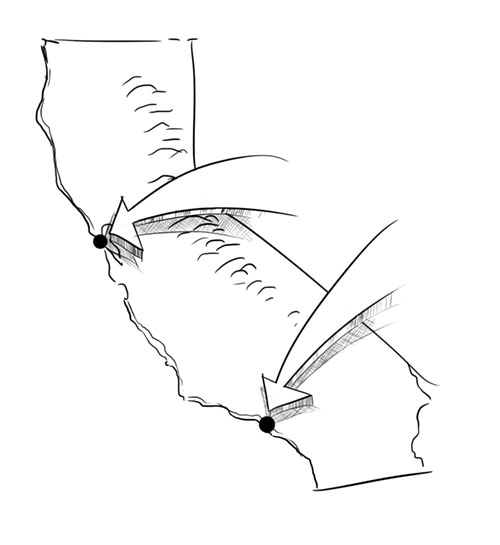
Describing the mindset of fans in 2015, Jerry said, “There's no general awareness of baseball beyond the Major Leagues. The Negro Leagues are the obvious one to mention, and then when I moved west I heard about the Pacific Coast League. To tell that story was really important for us, and a key for us carving out our own identity.” As Jerry learned about teams like the Los Angeles Angels, San Diego Padres, and Portland Beavers, he began to recreate those teams' jerseys, jackets, and hats—doing his part to tell their forgotten stories.
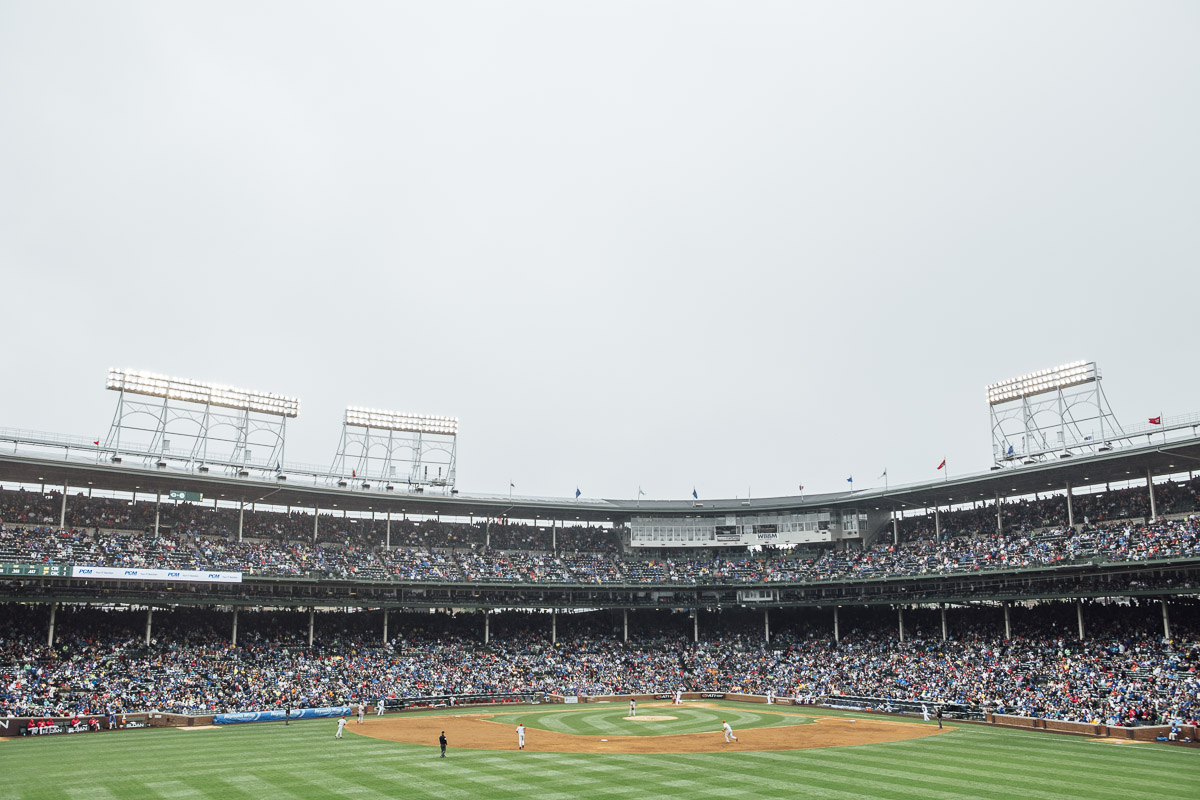
Jerry discusses the current state of Major League Baseball. The Someone Else team goes to Wrigley Field for a "Country Hats" giveaway.
“Storytelling” is an overblown concept in marketing these days, but it has always been integral to Jerry’s approach. “We continue to (tell stories) and I just find it interesting myself,” Jerry said. “So I think if going to Cuba and writing about the history of Cuban baseball is interesting to me, and making some Cuban caps and uniforms, then there's going to be some kindred souls out there who feel the same way and maybe will buy some of them. And that was really my thinking in 1988 when I started."
Jerry has described the Negro Leagues and the Pacific Coast League as the twin pillars of the Ebbets parallel universe, but the company's alternate reality encompasses much more. Recent additions to the Ebbets site include jerseys from forgotten football and hockey teams.
Although I don't own an Ebbets jersey, my favorite is the 1921 home top for the House of David. The House of David was an apocalyptic sect of celibate Christians, whose male members grew their hair and beards long. They were also quite good at baseball. As a barnstorming team, they were a big attraction in the early part of the 20th century. In terms of sheer peculiarity, the House of David backstory ranks alongside the Katz hat and the name of the New York Black Yankees' home field.
During our conversation I asked Jerry, "Why baseball, in the first place?
His answer:
“Baseball is entwined in the culture since the Civil War or shortly thereafter. It parallelled the racial issues in this country, and other social changes were reflected in the game that were part of the larger society ... celebrity culture—I think Babe Ruth, it could be argued, was one of the first modern, or the first modern, celebrity ... So, just things like that, which were culturally relevant and interesting, many of which have been talked about, but many of which have not. Our attempt was to fill in the blanks and try to color beyond the lines and just not do the obvious thing.”
Amateur leagues, segregated leagues, renegade leagues, international leagues, along with all of their heroes—revived and made real again, moving through the past and into history.
It's safe to say, at the very least, that Ebbets Field Flannels has avoided the ordinary.
